Visitors Magnet
Interactive installation
Visitors Magnet is an interactive art installation that invites its audience to uncover the mysteries of magnetism and electricity within a cabinet of curiosities. Shaped like a giant magnet and filled with objects and materials that interact with the electromagnetic field in interesting ways, this eye-catching exhibit is meant to draw in visitors from afar. Once they are close, they can investigate the installation at their own pace and delve into the various magnetic and electrical phenomena on display.
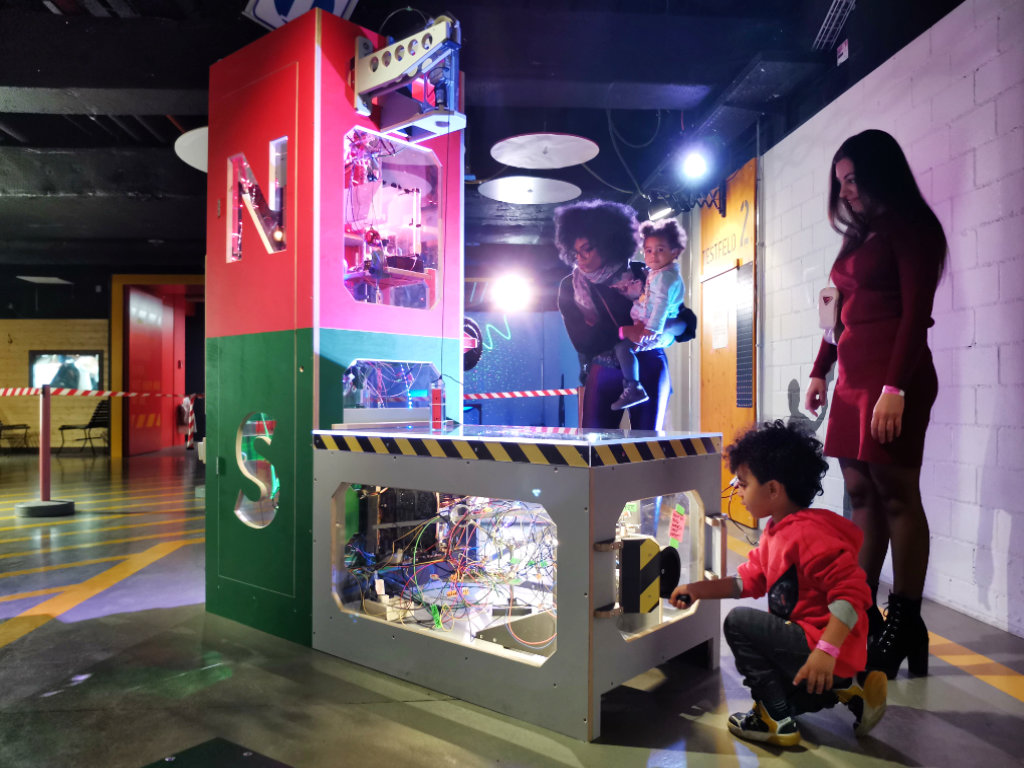
Background of the project
In November 2022, Swiss science center Technorama invited me for a month-long artist residency. The center's hands-on exhibition about electricity and magnetism is about to be re-made and I was tasked with developing ideas and building prototypes for new exhibits. During the first two weeks of the residency, I had already made the “Deflektron”, which was an ideal starter to become familiar with the big workshop and all the tools and materials. After that, I wanted to build more freestyle and I came up with the idea for the Visitors Magnet.

Traditionally, each exhibit in a science center is designed to present a single natural phenomenon in a clear and understandable way as a hands-on experiment. However, I realized that there were plenty of ideas and (partly failed) experiments around, which were still quite interesting, but did not make it in the final selection of exhibits for the new electricity and magnetism show. Therefore, I decided to create a Wunderkammer, or cabinet of curiosities, where those ideas could find a home, be appreciated and tried out by the visitors.
Did you spot the info-cube in the background?
So did I ;)

A different approach to maintenance
When I created the previous installation, I put a lot of effort into making it a repairable installation. In the creation of the Visitors Magnet, I wanted to try a different approach to repair and maintenance. Rather than attempting to restore broken parts to their original condition, I encouraged the team at Technorama to remove and replace them with something different. This approach not only allows for easier repairs, but also aims to make the maintenance process more fun and creative.
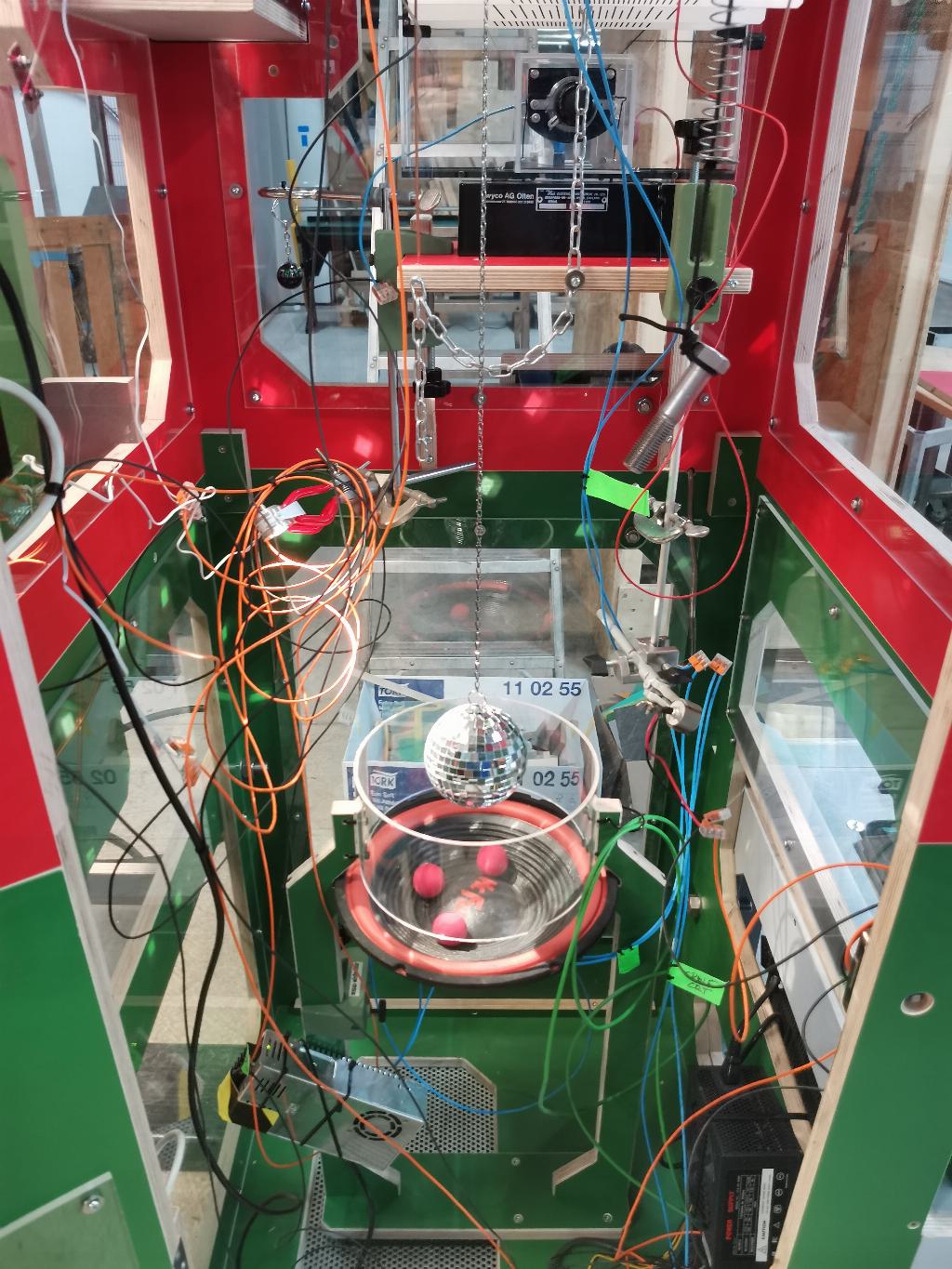
The structure of the Visitors Magnet allows for easy access to the interior of the cabinet. It is built out of multiplex and new elements can be easily attached by screwing them onto the surface. The design is flexible and adaptable. By embracing the potential for change and evolution, the Visitors Magnet is meant to evolve continuously and to surprise its visitors again and again with new experiences and discoveries.
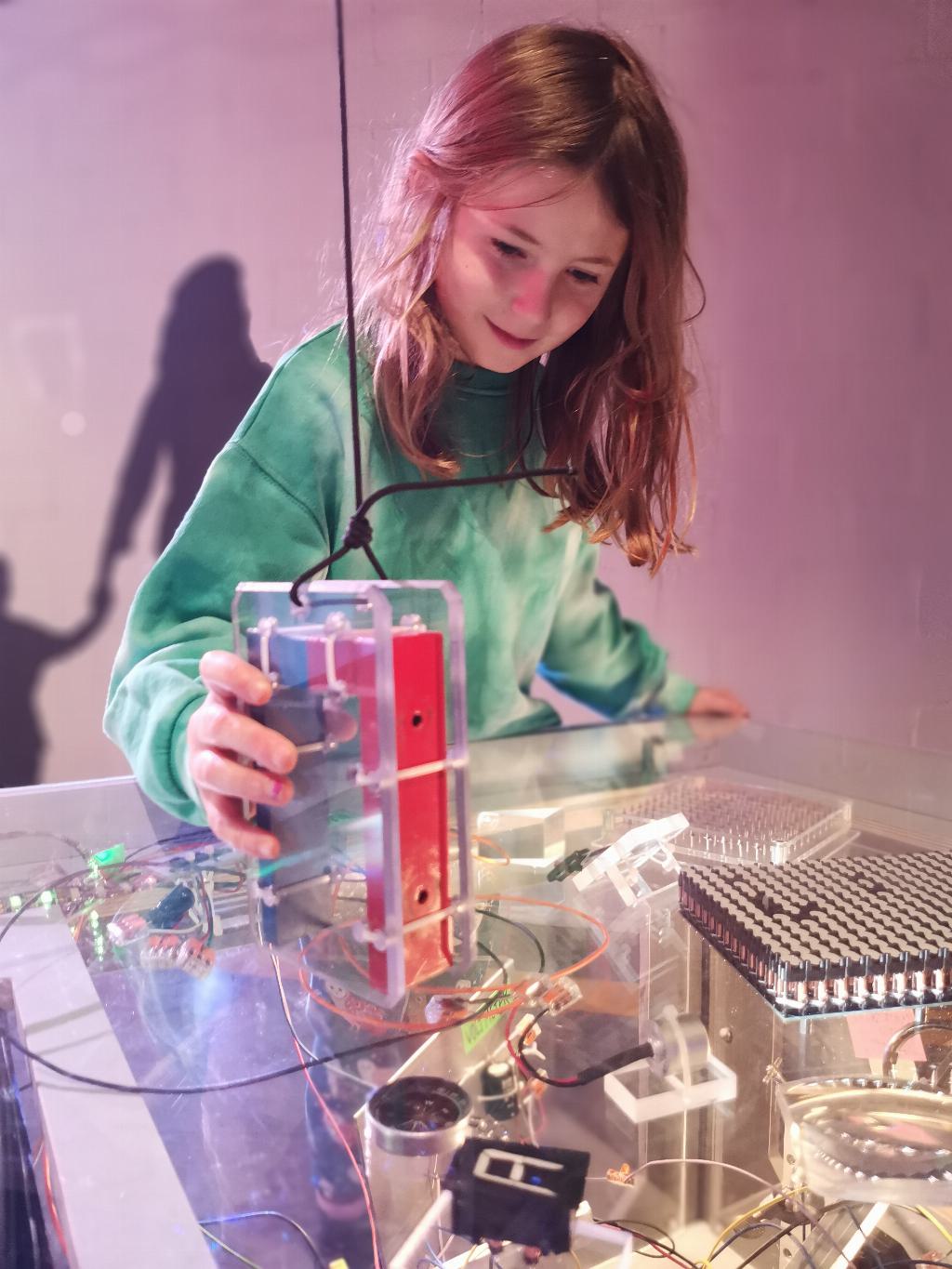
Current Status of the Installation
Let's take a closer look at the various items and experiments that are currently part of the installation and let's start with the ones inside the table:
- There's a simple compass
- There's also a flipdot panel without its electronic control circuit. It's a leftover from an idea that didn't work out as expected, but it is still mesmerizing to flip the pixels manually with a big horseshoe magnet.
- The magnetic domain demonstrator consists of a two-dimensional grid of compass needles and was used to be placed on top of an overhead projector in order to demonstrate the phenomenon of magnetic domains in a classroom. I do actually remember that I've seen the exact same thing in the physics class back when I was in school.
- The Magnaprobe is a three-dimensional compass, with a gimbaled bar magnet as a “needle”. It is highly sensitive and indicates the orientation of the magnetic field in space.
- There's also an electromagnetic 7-segment display. These types of displays were e.g. used in gas pumps.
- A Hall sensor with a WS2812B LED strip attached. The sensor detects the intensity and orientation of the magnetic field, which is displayed by bright colors flowing through the LED strip. The animated LED's hopefully attract even more visitors from afar.
- Some interesting materials which interact with electromagnetic radiation, focusing on wavelengths between 380 and 750 nanometers.
- On the front is a hand crank which is connected to a DC gearmotor. When the crank is turned, it generates electricity which powers colorful LED strips within the installation.
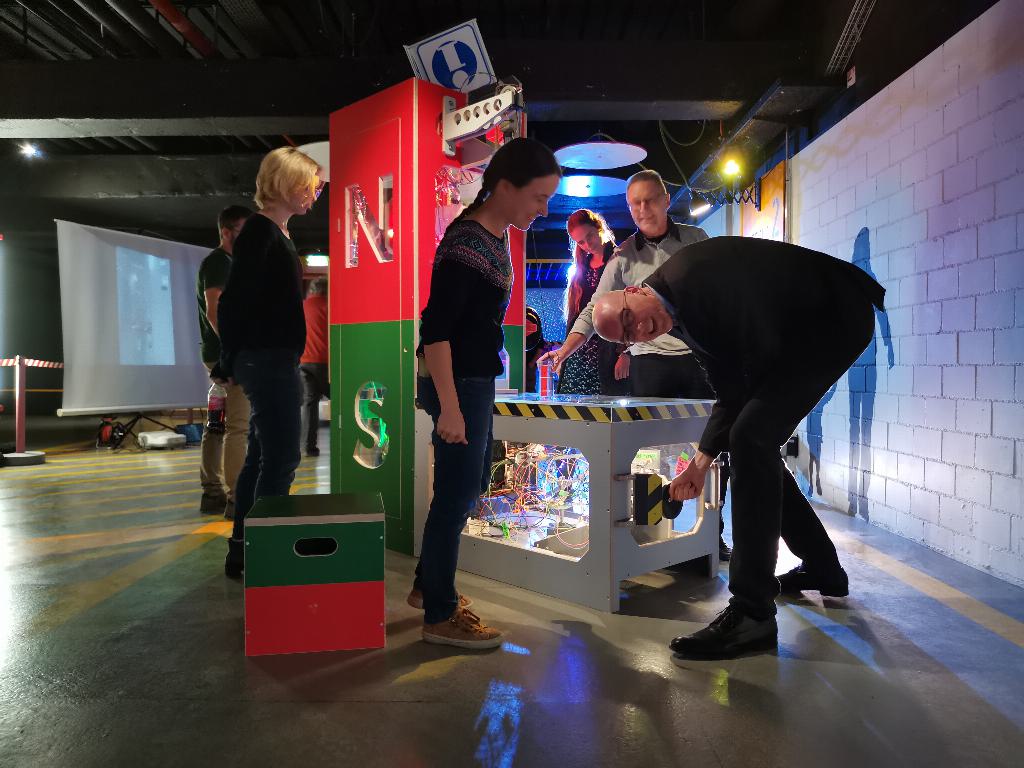
(I suspect that the crank might be the first thing to break)
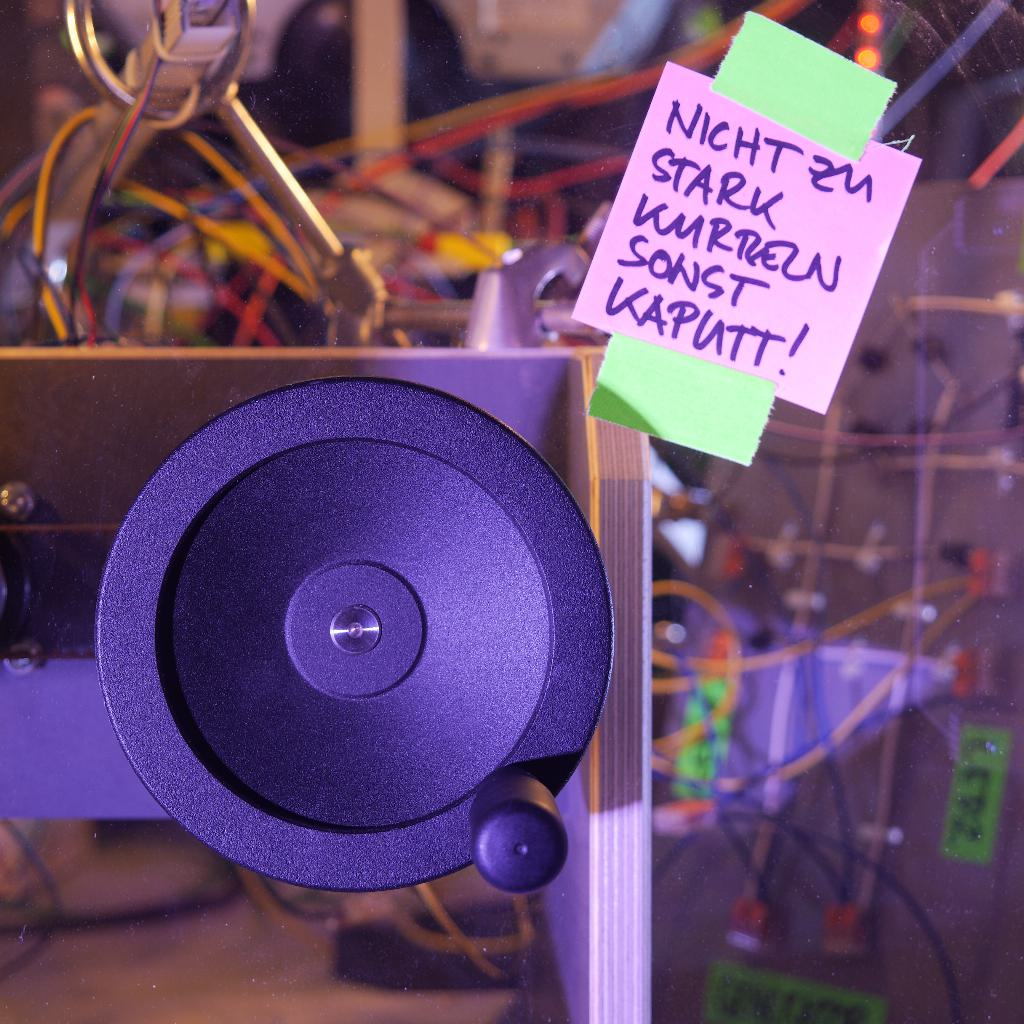
- Located at the other end of the table is a color CRT monitor. The video signal for this monitor comes from a surveillance camera attached above the monitor, creating a video feedback effect. When a magnetic field is applied to the monitor, the colors on the screen shift and the image distorts slightly, resulting in hypnotic visual effects. The monitor also has an additional coil attached around the back of its tube, which rotates the image on the screen around the z-axis when electricity is applied. The coil is connected to one phase of a scooter motor that acts as a generator. When visitors spin the motor, the image wobbles.
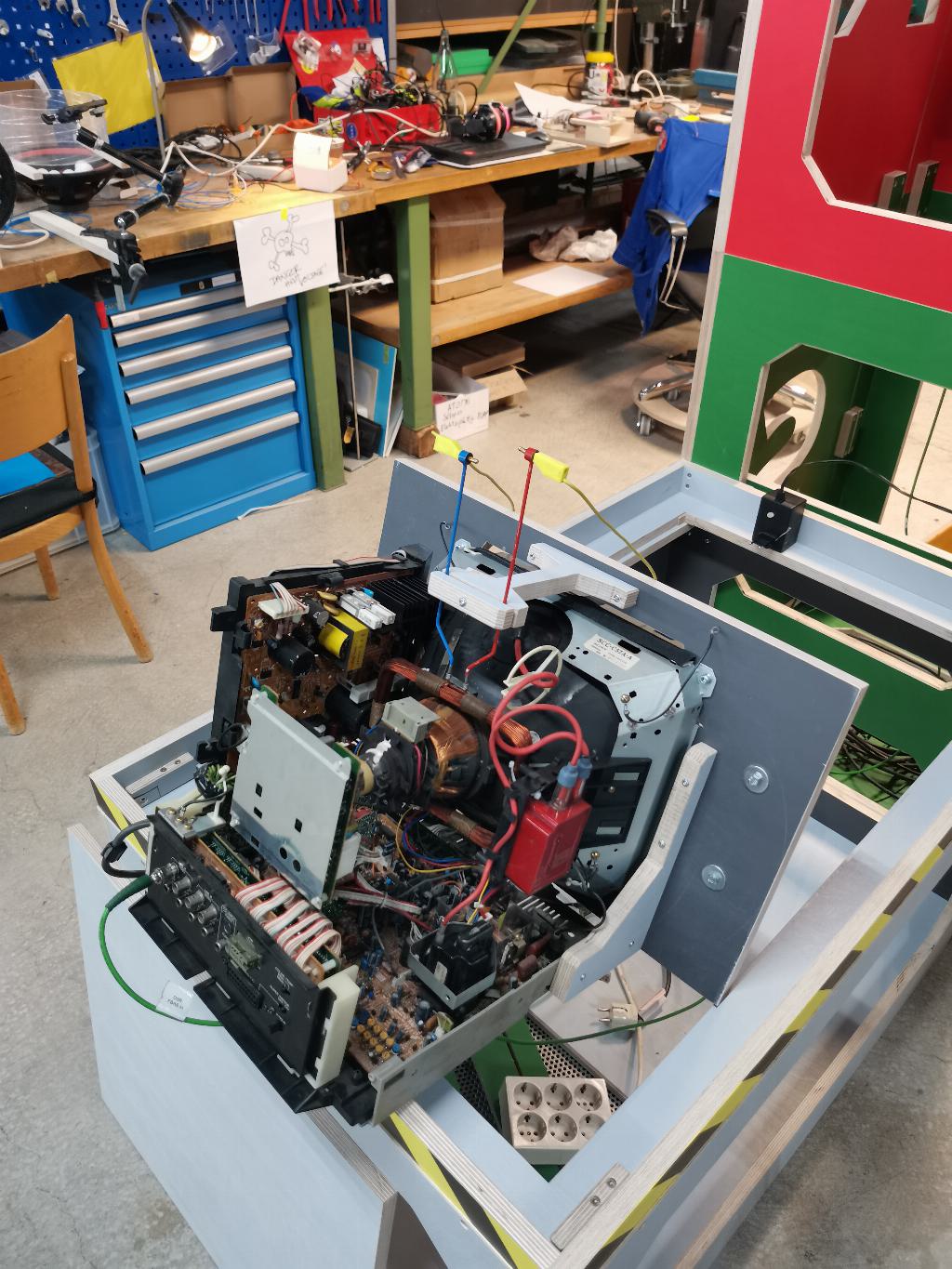
Which brings me to the big vertical magnet-shaped cabinet. It features the following experiments:
- The abovementioned scooter wheel. It contains a strong BLDC motor which serves as a three phase generator, with each phase producing a different effect. Besides the CRT wobbling, there's also a big bass speaker connected to another phase of the generator. It oscillates heavily and causes ping pong balls placed on it to jump around. Finally, a DC gearmotor connected to the third phase, via a rectifier, spins a disco ball above the speaker, but also the cube shaped info-sign on top of the magnet, which I found, covered in dust, on top of a cupboard in the workshop. A huge analog Voltmeter is connected in parallel to the gearmotor, too, allowing visitors to compare their individual spinning speeds and to participate in a competitive activity.
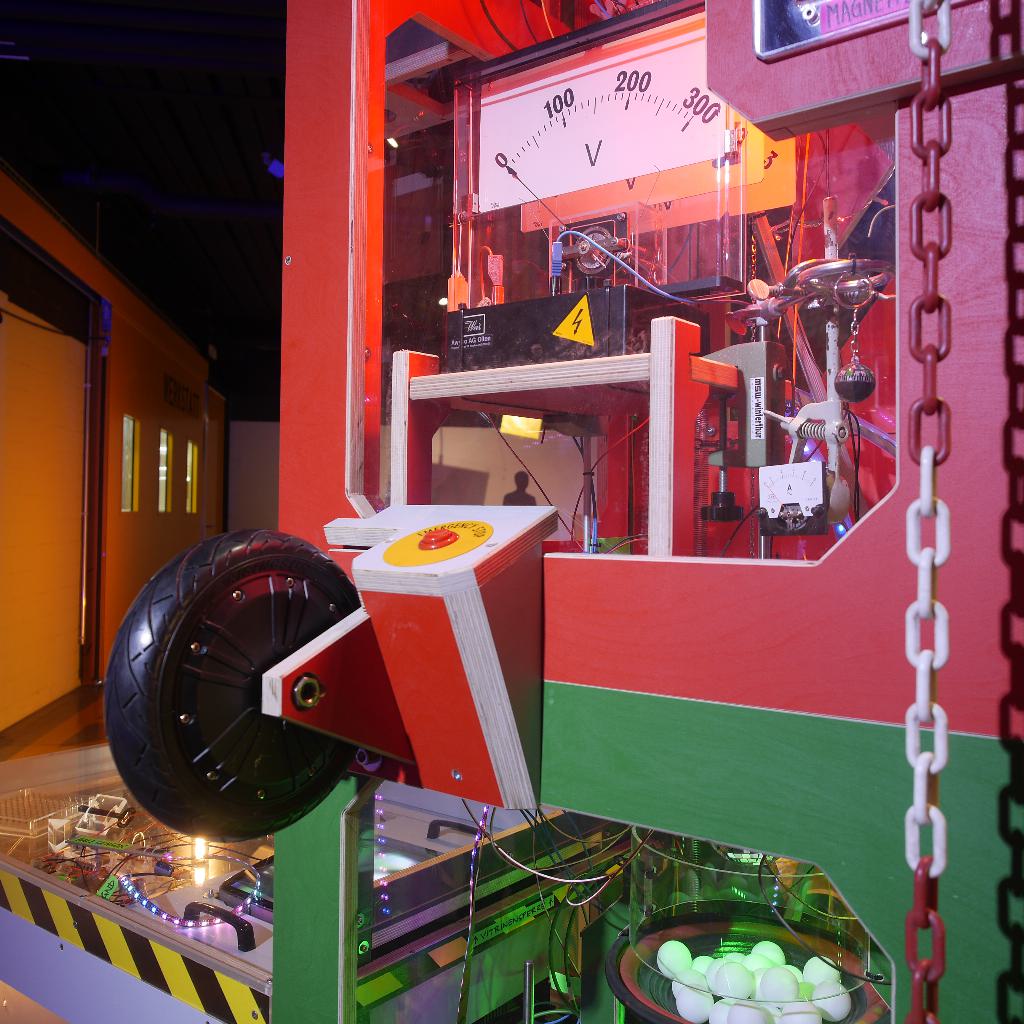

- The induction phone, located below the scooter wheel, is a mobile device that allows visitors to explore the electromagnetic field through sound. It consists of a large copper coil, directly connected to the earpiece of an old public phone handset. An inductive transmitter inside the cabinet is equipped with a sound player that plays a selection of tunes from Frédéric Lardon's album “Cellphone”. When the mobile device is placed in its mount, the music can be heard clearly. However, by moving the device around, visitors can also discover other noises in the electromagnetic field, such as the oscillations produced by the deflection coils of the CRT screen.
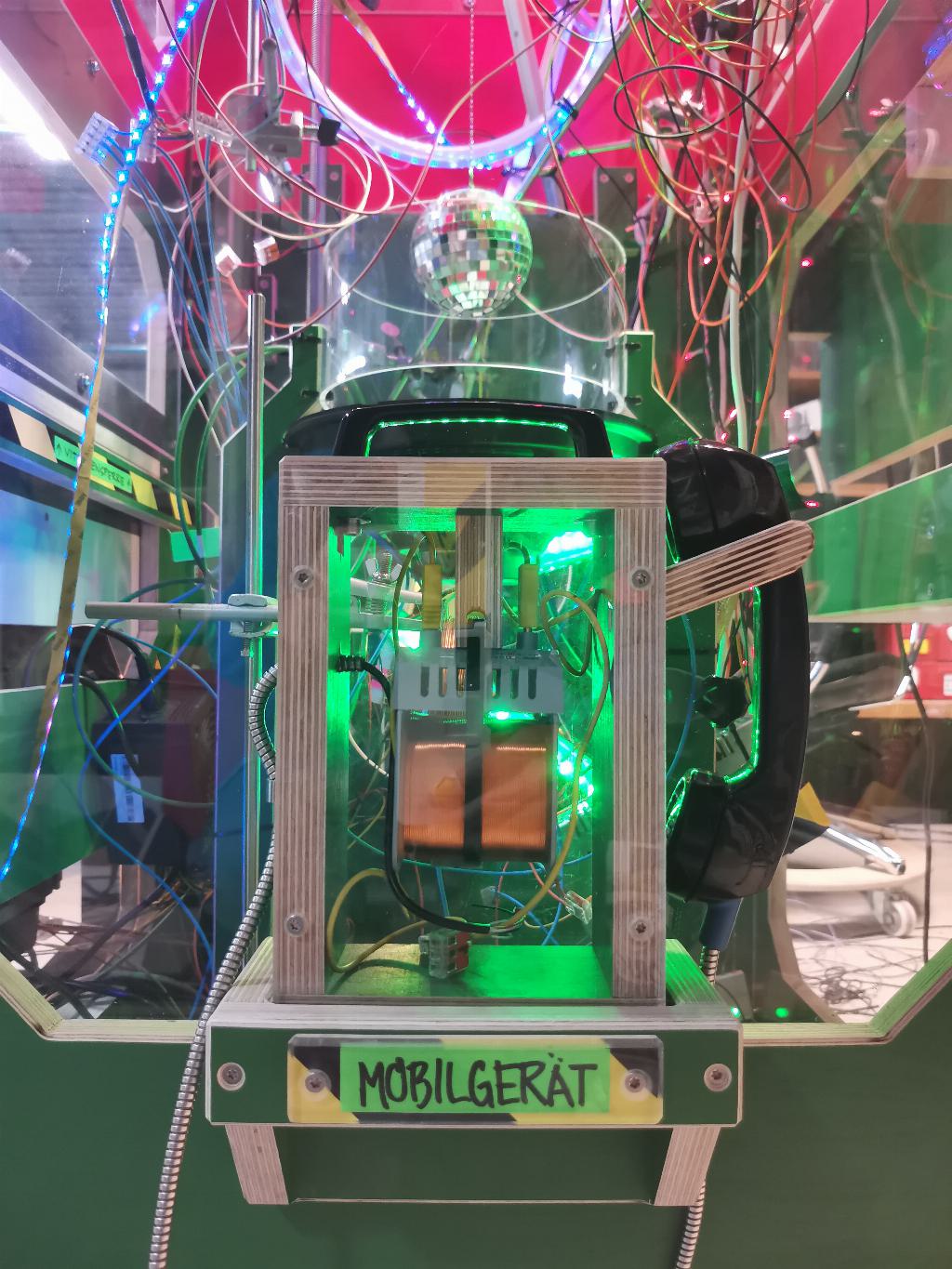
- A magnetic glove is hanging low at the corner of the installation. This is some sort of a novelty item. It's a work glove with three strong magnets sewn inside its back. The idea is that one can hold e.g. screwdriver bits when building something. It could potentially be used for sewing as well, to hold needles. While it may not be the most practical tool, it has proven to be a hit with visitors who enjoy trying it on and exploring it.
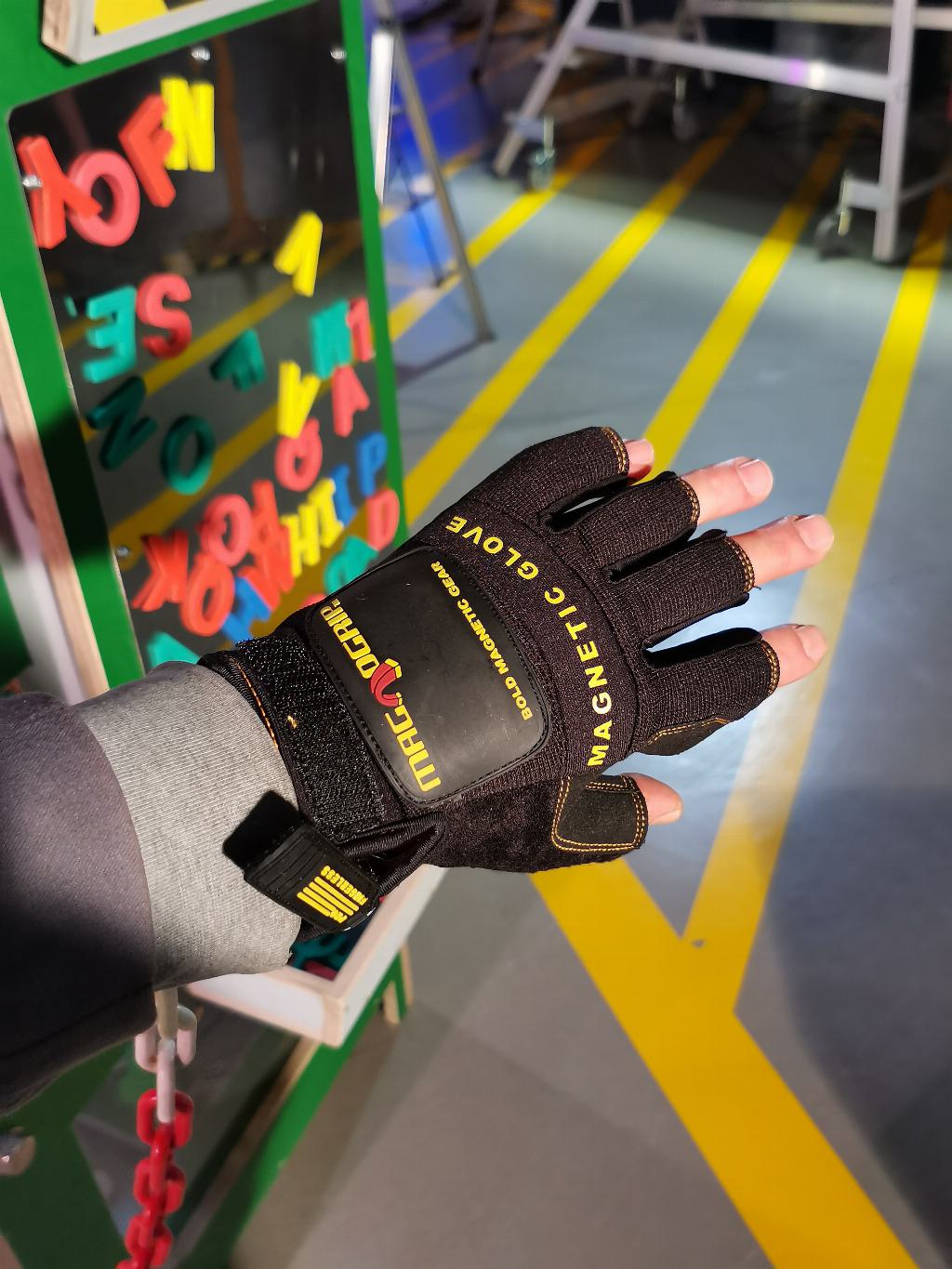
- The magnetic field analysis chamber: This chamber, located on top of a corner, features a few more 7-segment displays and a sheet of green magnetic field viewing film a.k.a. flux film. When magnetic items are placed inside the chamber, visitors can see their effect on the magnetic field on the film.
The mechanical 7‑segment displays also react to the magnets
- Last but not least, the Visitors Magnet also features a simple magnetic letter board, labeled
with “Important Information”:
Visitors are invited to write messages to each other with magnetic letters.
Quallen wo Gin heissen roxen Gurken box-joy
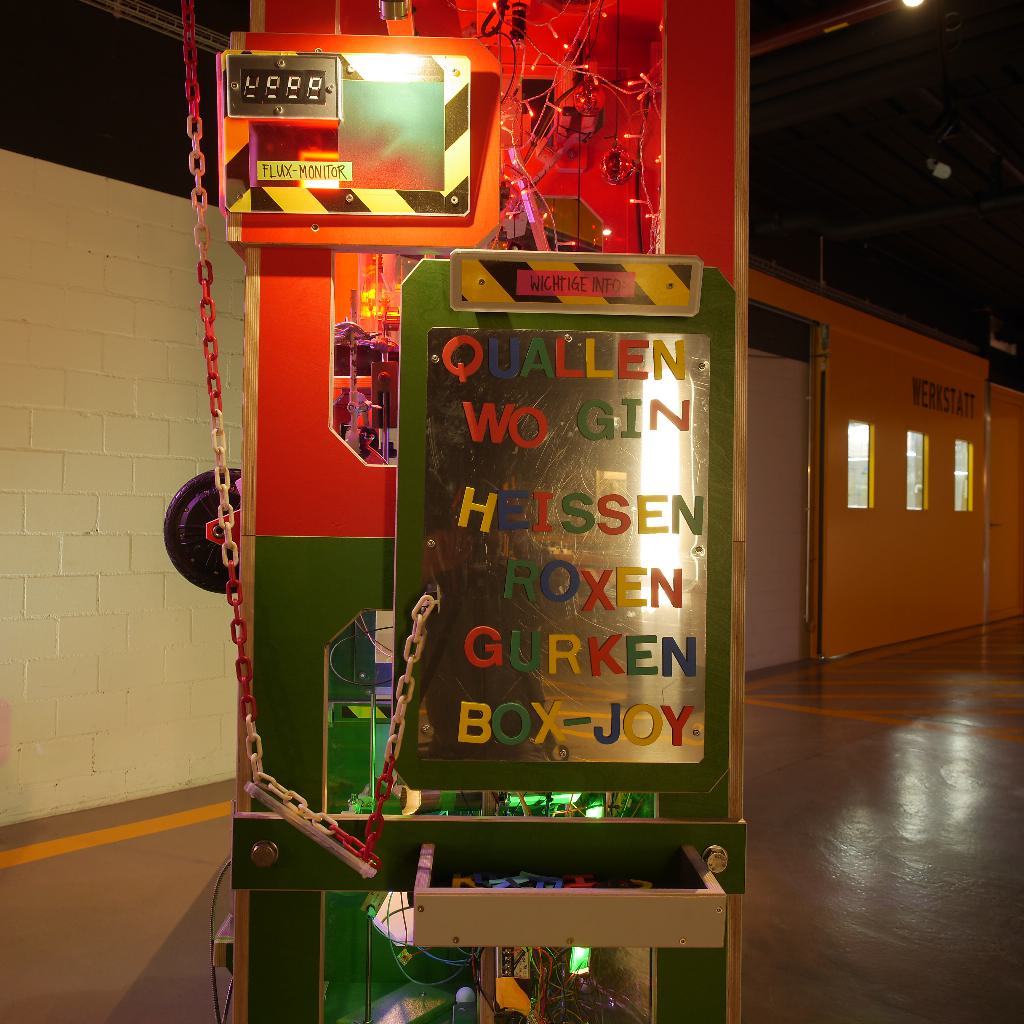
To mount all the components, I used a variety of vintage laboratory stands and clamps which I discovered in one of Technorama's storages. These materials allowed me to set everything up efficiently and will also make it simple to modify the interior in the future.
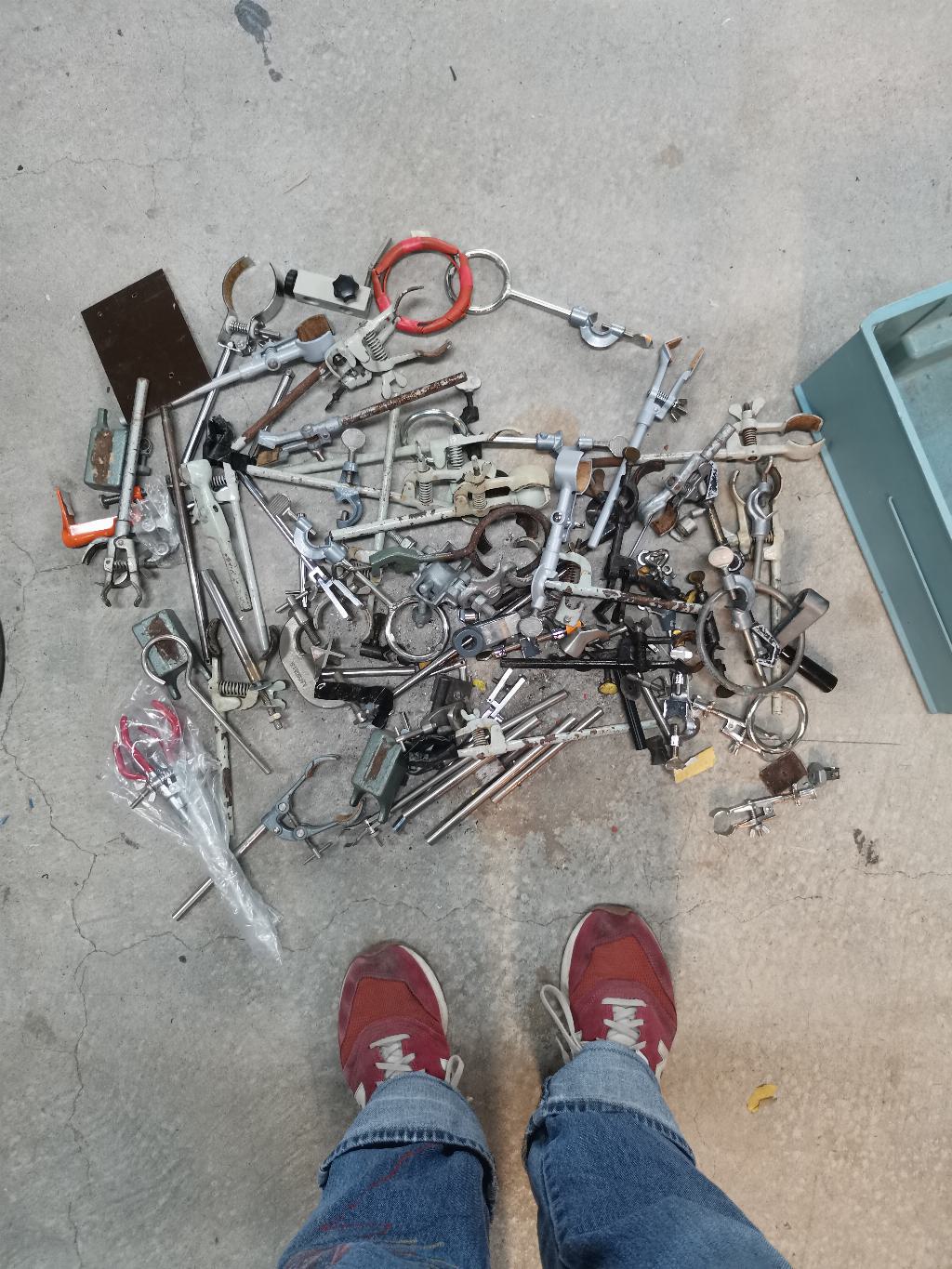
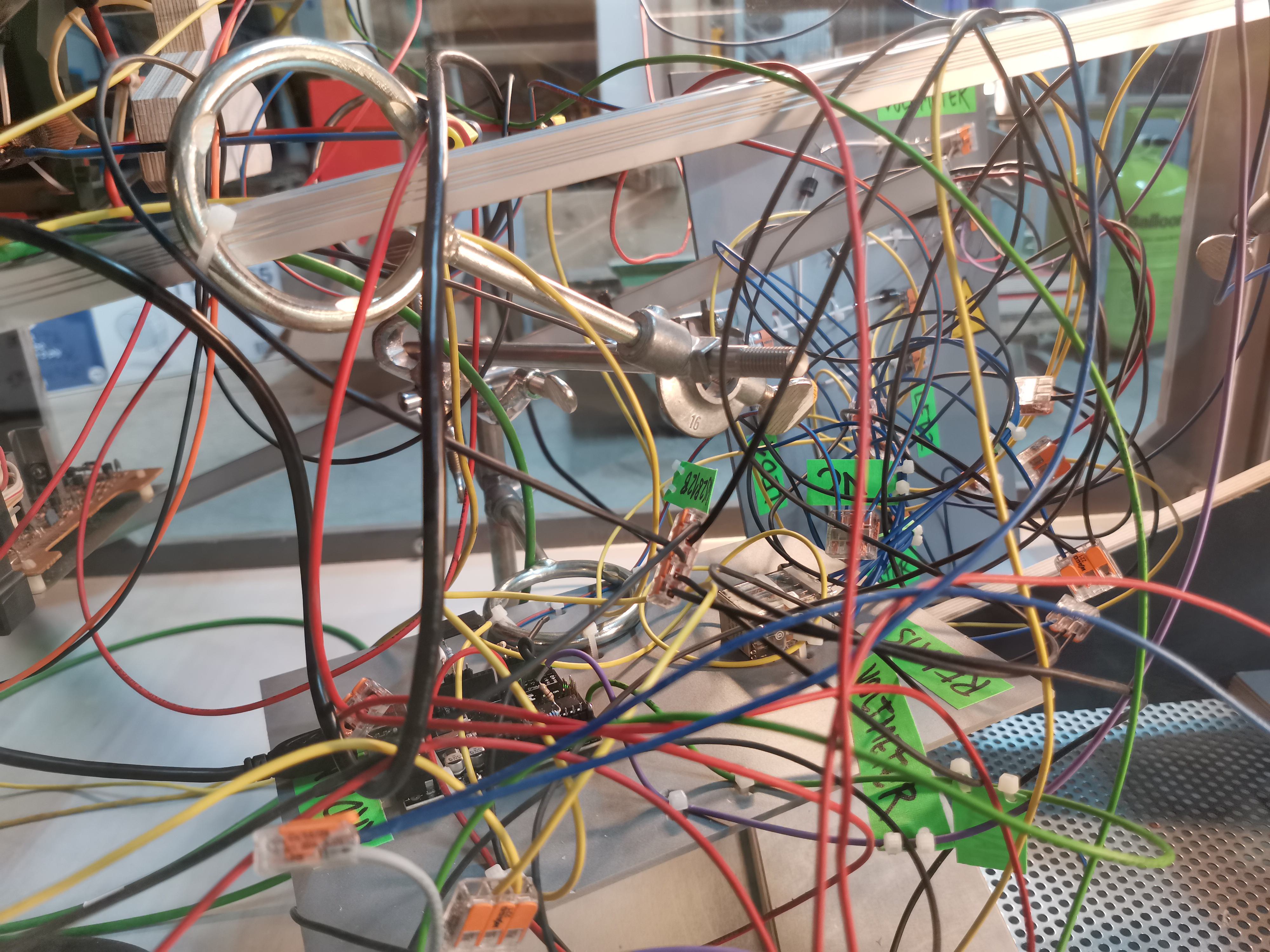
That raises the question: How will the Visitors Magnet appear the next time I see it? What types of experiments will it showcase? I'm extremely curious to find out and I'm very much looking forward to my next visit at Technorama!
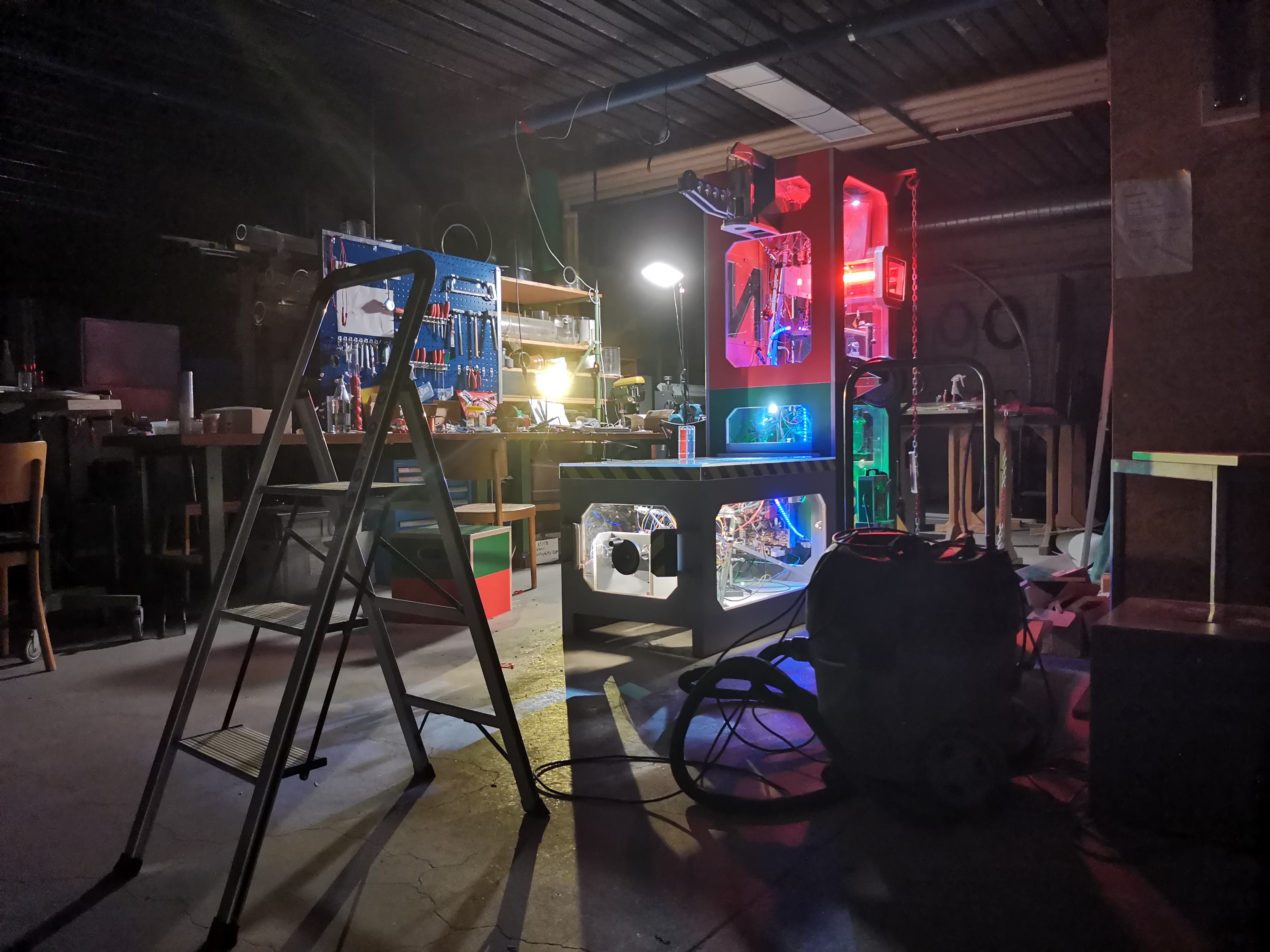
Thanks
Thank you to the amazing team at Technorama who made the Visitors Magnet possible, namely: Albert, Chrigi, Cedi, Daniel, Elija, Hölze, Jörg, Jürg, Kevin, Marco, Mario, Michi, Res, Robin, Rolf, Romeo, Sascha, Simon, and Thomas.
Special thanks to Charlotte and Armin for inviting me and for giving me the freedom to create whatever I wanted, and to Bernie Lubell for recommending me as artist in residence.
I'm grateful to Felix Fisgus for his valuable input regarding CRT monitor sources and video feedbacks and to Rrrrrose Azerty for the music in the video.
And, of course, a big thank you to all the visitors who allowed me to film and to photograph them for the documentation of this project!

Additional resources
- ZIP file containing codes, schematics and 3D-model
- Visitors Magnet photos all hires and CC-BY Niklas Roy
- Visitors Magnet video at archive.org